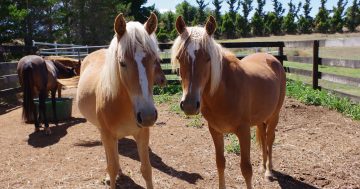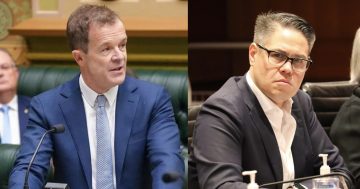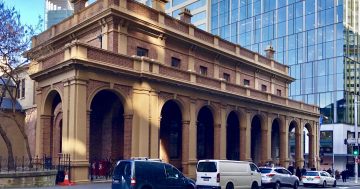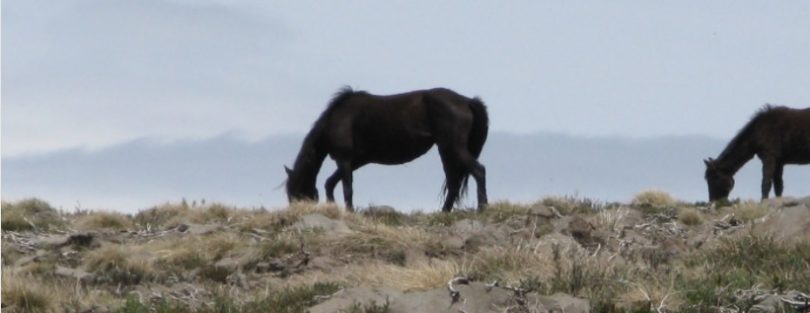
Wild horses grazing on the vast plains of Kosciuszko National Park. Photo: Reclaim Kosci.
Amid the festive season rush, there’s another race of sorts taking place in streets, shopping centres and malls throughout NSW.
Its purpose lies way beyond the concrete and asphalt boundaries of our cities and towns – in the streams and rivers, water catchments, wetlands, bogs, bushland and habitats of the fragile high country of the Australian alpine region.
Formed by the splitting apart of the ancient supercontinent of Gondwana, for their 520 million years of existence, the quiet, brooding alps have always been home to native wildlife.
In the 230 years since white man first settled Australia, it has progressively come to house populations of introduced species, including wild horses – also known as brumbies – which historically, politically and ecologically continue to divide the nation.
Wild horses have long been in the sights of conservationists, including Honorary Associate Professor at the Australian National University’s Fenner School of Environment and Society, the late Dr Graeme Worboys, and protected area and connectivity conservation specialist Ian Pulsford.
After various studies – one being as recent as March 2020, conducted in locations in the alpine region traversing the ACT, NSW and Victorian borders – the unfailing conclusion from Dr Worboys and Mr Pulsford was the need for urgent and effective action to end pest horse impacts, restore damage to water catchments, and help preserve Australia’s native species.
Wild horse culling isn’t new, but amid simmering debate about their presence, it does continue in three specific areas of Kosciuszko National Park as feed lures and horse yards are used to capture the horses, which are then largely rehomed.
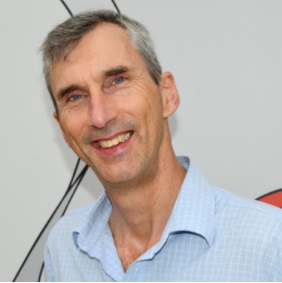
Invasive Species Council CEO Andrew Cox. Photo: Supplied.
Invasive Species Council CEO Andrew Cox says that’s not enough.
“We are pleased that emergency post-bushfire horse removal began in July 2020, but to date only 312 horses have been removed,” he said. “Last year [in 2019] there were only 99 removed.
“Just to stabilise the horse population, you need to remove more horses than are foaled each year. To reduce the population, you need to remove many more than this.”
Mr Cox said an April-May 2019 official count put the number of horses in Kosciuszko National Park at 20,000.
“Their numbers and resulting impacts are continuing to grow,” he said. “This level of horse removal is totally inadequate to stem the horse population growth.”
Meanwhile, NSW Minister for Energy and Environment Matt Kean is sweating on the tightly held, post-bushfire spring population recount, plus final reports from the Kosciuszko National Park wild horse management scientific and community advisory panels to inform a new draft wild horse heritage management plan under the Kosciuszko Wild Horse Heritage Act 2018.
As that clock ticks, Andrew Cox is pressing on.
“The promised new horse plan was due to be released for comment in February 2020,” he said. “It is now planned for early 2021, which is an unacceptable delay.”
The Invasive Species Council and its offshoot, Reclaim Kosci, are currently intent on rounding up 20,000 petition signatures by 13 January, 2021, to trigger debate in the NSW Legislative Assembly urging action on numbers of wild horses in Kosciuszko National Park.
The submission, supported by Member for Wagga Wagga Dr Joe McGirr, calls on the NSW Legislative Assembly to:
- Act urgently to reduce feral horse numbers in Kosciuszko National Park by supporting a horse management plan that incorporates the best scientific and RSPCA advice.
- Fund a program to restore the catchments, slopes, wetlands and mountain streams impacted by feral horses in Kosciuszko National Park.
- Repeal the Kosciuszko Wild Horses Heritage Act 2018.
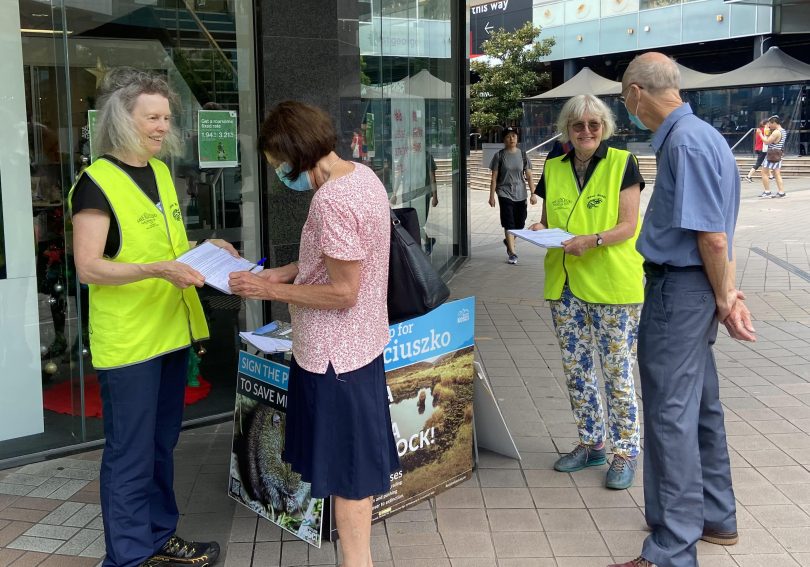
Reclaim Kosci volunteers collecting signatures for the petition at Hornsby, in Sydney. Photo: Reclaim Kosci.
At last count, 2316 signatures had been collected.
That number should change dramatically as a recruitment campaign calling on volunteer coordinators to build public awareness of the petition moves into full swing during the holiday period.
Area coordinators will receive a one-off $1000 honorarium – provided by Invasive Species Council donors – for four to five weeks’ worth of work.
And far from claims Reclaim Kosci volunteers have been harassing shoppers, Mr Cox said they only operate where permitted, interacting with any member of the public in the same way that others do when promoting a good cause in public streets and shopping centres.
“Courteously and without interfering with other people,” he said. “Regardless of people’s perspective, everyone has been unfailingly polite.”
Mr Cox refutes comments made by former politician and brumby advocate Peter Cochran that the petition bares the hallmark of Minister Kean.
“This is not the case, nor was Kean’s office consulted during the petition process,” he said.
Mr Cox said Reclaim Kosci supports management of the horse population in Kosciuszko National Park via a range of effective and humane means, as per RSPCA and scientific advice.
“Poisoning has not been proposed as a management tool for feral horses by Reclaim Kosci, Invasive Species Council or NPWS [NSW National Parks and Wildlife Service] and is not authorised to be carried out in NSW,” he said.
“We do not seek to remove all horses from Kosciuszko National Park. It is not practically achievable. We want to see the horse population reduced using humane and effective means to a level where they no longer have a negative impact on the national park.”
Public exhibition of the draft Wild Horse Heritage Management Plan is expected in the first half of 2021.
The plan will take into account the new population survey – once finalised – and advice provided by the community and scientific advisory panels.








